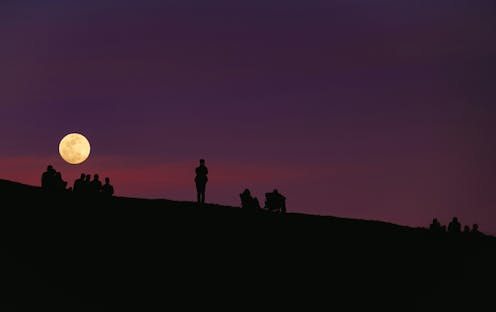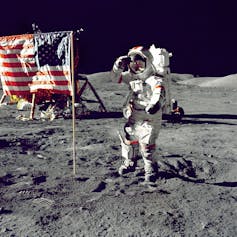
Scientific and commercial activities on the Moon could permanently change the lunar environment. These activities include sending vehicles to the Moon, extracting its resources through mining the lunar surface, building facilities and extracting water from areas on the Moon where sunlight never shines.
However, an organisation called the the World Monuments Fund (WMF) is attempting to protect the Moon from being despoiled by adding it to its list of monuments worth protecting. The non-profit, based in New York, is dedicated to safeguarding the world’s heritage. Working with local governments, they have protected more than 700 sites in 112 countries including many Unesco world heritage sites.
The WMF highlights almost 100 sites on the Moon bearing traces of the human history of space exploration. One of them is Tranquility Base, the landing area of Apollo 11, where Neil Armstrong’s boot-print is preserved.
Looking for something good? Cut through the noise with a carefully curated selection of the latest releases, live events and exhibitions, straight to your inbox every fortnight, on Fridays. Sign up here.
Due to increasing lunar exploration in the current decade, landing sites with leftovers of earlier missions could be damaged, looted or destroyed. These sites hold historical significance. But they also put old space powers and an idea of exploration that is tied up with the space race, at the centre of humanity’s relationship with space.

In making the Moon a monument, it is worth asking: are these selected sites really worth memorialising? Whose history is being remembered and considered worth preserving? What values are celebrated with them?
For example, are the two golf balls smuggled onto the Moon and one astronaut’s family portrait really heritage for humanity as a whole? They could, alternatively, be considered litter, or a symbol of lack of environmental care.
As researchers of knowledge production within astrobiology and the global governance of outer space, we believe a more nuanced debate is needed on what is worth preserving on the Moon and why and how we could enable effective preservation.
Whose heritage?
The perceived elitism of space exploration has been challenged since the 1960s. Take Gil Scott-Heron’s poem Whitey on the Moon (1970), for example. It’s a poignant reminder that, for many African Americans, the prioritisation of the Apollo programme at a time of civil rights protests was a choice steeped in racial inequality.
Many people did not feel represented by the ideology and competitive character of early space exploration. Today, in the new space age, as more and more commercial enterprises enter the space sector, critiques of space colonisation are also mounting.
Critics have pointed out how the promises of occupying Mars and other celestial bodies mirror old colonial fantasies of acquiring new lands and resources. An ever-expanding frontier promises growth, prosperity and dynamism. In this vein, the logic of space exploration and the knowledge necessary to support the realisation of these plans have been described as legacies of settler colonialism.
In this context, it is reasonable to worry that adding the Moon to the WMF’s watch-list may not inspire a broader and shared sense of caring for the Moon. It could actually have the opposite effect, and strengthen disaffection for space exploration, understood as a remote and elitist activity.
However, there is also hope that the news of potential danger to the lunar environment may spark conversations about the many values, histories and relationships that connect humans to the Moon.
What about ‘natural’ heritage?
Despite the mention of specific sites, the addition of the Moon to the World Monument watch list applies to the celestial body as a whole. This move may broaden the interest away from sites where humans have been.
Other sites may be in danger of destruction. These include sites of scientific interest or environmentally unique features, such as permanently shadowed regions containing ice.
Expanding the understanding of heritage to include both cultural and natural sites of interest signals that the Moon’s landscape isn’t only worth preserving because some humans have been there.
Calls for environmental protection and conservation (also called exogeoconservation) have already come from different communities. Indigenous leaders have spoken up about not desecrating the Moon with activities that counter their values and beliefs.
For example, the Navajo nation has been protesting against spreading human ashes on the Moon since 1998. Regulations in relation to heritage protection in outer space are urgently needed. Currently, protection against biological contamination is well researched and led internationally by the Cospar panel on Planetary Protection
The initiative from the WMF is adding pressure to multilateral organisations to define what counts as harm in space exploration, and how to protect both natural and cultural heritage in space.
This is welcome, but a broader debate is needed about what interests and values need to be prioritised. This needs to inform proposals for effective heritage governance in a space like the Moon, which is both everybody’s heritage and nobody’s possession.
Alessandra Marino received research funds from Research England and the UK Space Agency for work on space technologies in international development.
Marjan Ajevski does not work for, consult, own shares in or receive funding from any company or organisation that would benefit from this article, and has disclosed no relevant affiliations beyond their academic appointment.
* This article was originally published at The Conversation

0 Comments